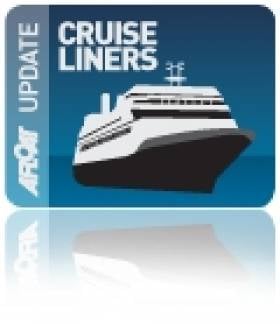Displaying items by tag: Berlitz
Cruise Liner Traffic to Remain Buoyant in 2012
The Truth About Low Fares
The 2012 Guide explains that bargains do exist, but advises that it's important to read the small print before booking. To reduce prices, cruise lines have to cut costs if they are to stay afloat, and they do so by reducing anything from food portions, training, the strength of coffee, service levels to the variety of green vegetables. When budgeting, cruise-goers should be wary of the following:
add–ons such as government taxes and a processing fee can take the glow off an apparent give-away price
a highly discounted fare may apply only to certain dates and itineraries and it may be subject to a booking deadline
a limited cabin choice, grade and location may be available
being restricted to first seating at dinner
the low fare may not apply to children, and
port charges, handling fees, fuel surcharges or other taxes may cost extra
The 2012 Winners .... and Losers
The hard hitting reviews in this eagerly awaited Guide expose the best and worst scoring cruise ships using an internationally accepted rating system devised by the author, the most feared critic in the business. The only source of independent star-rating of virtually all ocean-going cruise ships worldwide, the Guide takes into account a remarkable 400 separate items based on personal cruises, visits and revisits to ships, as well as observations and comments from Ward's team. Having reviewed 285 cruise ships, the new Berlitz Guide names the top-rating ships for 2012, with the 10 most highly rated being officially 'small' or 'boutique', and explains why they scored as highly as they did. Europa, a 'Small Ship' of Hapag Lloyd Cruises, comes out on top for the 12th year and is once again the only vessel to be placed in the exclusive 5-star Plus 'club'. Seabourn's ships scoop a remarkable 6 of the 10 Top places, while SeaDream gets the top two slots in the Boutique Ships category.
Commenting on Europa's consistency, Douglas Ward, said, "Although Europa is now 12 years old, it continues to score the most points with 1,852 out of a possible 2,000 points. The only ship to have a 3-star Michelin chef on board for most of the year, Europa is a classic that has stood the test of time, and looks almost new, thanks to the dedication of its crew and owners. However, there are movers in the ranks too, with ships going both up and down in star rating, to reflect the changes in service or staff training." Bumping along on the bottom are two National Geographic ships, Sea Bird and Sea Lion, both being small, basic, old ships for wildlife or nature watching. (See Note to Editors for Top 3 Ships in each of the 4 categories.)
The 2012 edition of the Berlitz Cruise Ships App for the iPhone, iPad and iPod Touch allows would-be cruise-goers to quickly search through all 285 ships according to their needs, whether for family travel, cuisine, accommodation, size of ship and many other criteria.
The World's Top Authority on Cruising and Cruise Ships
When it comes to life on the ocean waves, Ward is the world's top authority on cruising and cruise ships, with more than 45 years of experience. He continues to spend up to 200 days a year aboard cruise ships, inspecting and evaluating their facilities. The cruise industry consists of more than 70 ocean going cruise ship operators carrying over 21 million passengers a year. Although the choice can be almost over-whelming, this new Guide will help readers identify the X-factor - that special quality that makes a ship stand out for them.
Fully updated and revised and now in its 27th year, the Berlitz 2012 Complete Guide to Cruising & Cruise Ships, will be available from October 1, 2011 (688 pages, £17.99) from all good bookstores. The Berlitz Cruise Ships 2012 App will also be available during October. For further information visit www.berlitzpublishing.com























